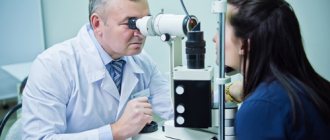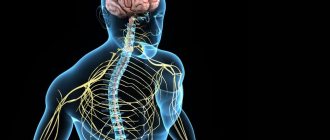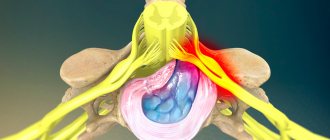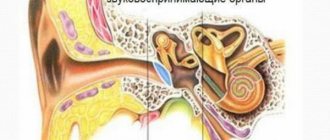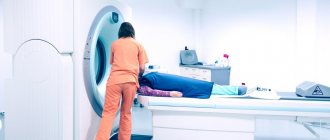Meningism is a syndrome that manifests itself in infectious diseases, poisoning and traumatic brain injuries. It is characterized by irritation of the membranes of the brain. Some people confuse the problem with meningitis, but there is a difference in their clinical pictures. The symptoms of meningitis appear clearly and quite clearly.
Do not self-medicate. At the first signs of illness, consult a doctor.
- Etiology
- Symptoms
- Diagnostics
- Treatment
- Possible complications
- Prevention
Most often, meningism occurs in children with fever; in rare cases, it is diagnosed in adults. According to ICD-10, meningism is coded R29.1.
Etiology
The human immune system protects the brain very well. But if it happens that with a weak immune system, the infection still gets there, the body still tries to fight it. Paradoxically, this only makes the situation worse.
Due to the fact that at this time red and white cells begin to be produced in excess and enter the brain, inflammatory processes begin that can result in edema. If nothing is done, the access of blood and oxygen to the brain will be blocked. The further development of the infectious disease will worsen.
Clinicians identify the following causes of meningism:
- poisoning by chemical elements;
- allergic reaction to medications used;
- fungal infections;
- the presence of various parasites in the patient’s body;
- benign formations or oncology - boils on the face or neck can cause the syndrome;
- infectious diseases that affect the area adjacent to the brain, for example, otolaryngological diseases;
- diabetes;
- uncontrolled use of medications that affect the immune system;
- unfavorable way of life.
Children's meningism syndrome can even occur due to ARVI and high blood pressure.
Meningitis and meningism
Characteristic manifestations
Symptoms and manifestations of meningism appear very quickly, and it will not be difficult for a qualified specialist to recognize them:
- chills up to fever, most of all this manifests itself in children;
- mental disorders such as confusion, hallucinations, memory loss. Direct mental disorders may also be observed;
- nausea, in some cases turning into vomiting;
- usually patients are afraid of light and in no way want to contact its source; they can most often be seen turned to the wall, sometimes with a blanket on their head;
- incredibly severe headache, which is only aggravated by any sounds, movements, bright light;
- limited or complete inability to bend the head;
- inability to straighten a leg that was previously bent at the knee;
- the patient’s legs bend by themselves if, while lying down, his head is bent to his chest;
- pale skin, especially around the mouth and nose;
- if a baby is sick, then when examining his fontanelle, you can notice some pulsation and protrusion;
- absent-mindedness and decreased attention;
- infants suffering from meningism are extremely restless and nervous, any sharp sound or touch disturbs their peace of mind, and they behave in the same way during sleep;
- there is a clear decrease in appetite, but the patient does not refuse fluids;
- respiratory dysfunction;
- The patient’s blood pressure is low, but the pulse is frequent;
- sometimes during sleep, and sometimes during active life, the child takes positions that are uncharacteristic for a person;
- rashes and redness on the skin;
- convulsions.
Symptoms
All signs indicating meningism occur quickly, so it will not be difficult for the doctor to recognize them.
Symptoms of developing meningism:
- a sick child has chills that turn into fever;
- mental disorders: confusion, amnesia, sometimes mental disorders appear;
- nausea, sometimes with severe vomiting;
- photophobia occurs - children in this case lie with their faces turned to the wall, completely covered with a blanket;
- very severe pain in the head, the patient reacts painfully to sounds, movements and light - limited movements appear when bending the neck, sometimes it even becomes impossible;
- it is impossible to straighten a leg that is bent at the knee;
- if you put the patient on the bed and try to tilt him towards his chest, his legs themselves will begin to bend at the knees;
- the nasolabial triangle becomes pale;
- the patient's concentration deteriorates and absent-mindedness appears;
- with this diagnosis in an infant, the child exhibits anxiety and concern, he is overly receptive to sounds and touches, and his sleep is disturbed;
- the patient refuses to eat and drinks liquids in large quantities;
- breathing is impaired;
- pressure readings drop and pulse quickens;
- a rash appears on the skin with redness;
- convulsions begin.
There are other symptoms that may appear depending on the underlying cause that caused the meningismus.
Meningeal syndrome
Meningeal syndrome is diagnosed by specialists in the field of infectology, pediatrics, neurology, and therapy. When examining, pay attention to the presence of meningeal posture, hyperesthesia, pain and tonic phenomena. Hypertonicity of meningeal origin is differentiated from muscle tension accompanying myositis and radiculitis. In the neurological status, characteristic changes in the reflex sphere are determined: revival of reflexes, followed by their uneven decrease. If meningeal syndrome is associated with damage to the brain substance, then a corresponding focal neurological deficit is detected (pyramidal insufficiency, aphasia, cerebellar ataxia, facial nerve paresis). There are more than 30 clinical symptoms that help diagnose meningeal syndrome. The most widely used among neurologists and general practitioners are the following:
- Kernig's sign
- with the patient lying on his back, the lower limb is passively flexed at the hip and knee joint. Subsequent attempts by the doctor to straighten the leg at the knee are impossible due to tonic contraction of the shin flexor muscles. - Brudzinski's symptoms
- in the supine position, there is an involuntary pulling of the lower extremities towards the abdomen when bending the patient's head (upper), pressing on the pubis (middle), checking Kernig's sign (lower). - Edelman's sign
is extension of the big toe when examined using the Kernig method. - Netter's sign
- in a sitting position with legs extended in bed, pressing on the knee of one leg causes the other to bend. - Kholodenko's symptom
is bending of the knees when the doctor tries to lift the patient by the shoulders. - Guillain's sign
- in the patient's supine position with straightened legs, compression of the muscles of the anterior surface of one thigh leads to flexion of the second leg. - Lessage's symptom
- when holding a child in the air in a vertical position by the armpits, the legs are pulled towards the stomach. Characteristic for young children.
The most important role in the diagnosis of meningeal syndrome is played by lumbar puncture. It is contraindicated in cases of severe intracranial hypertension, the danger of mass effect, and is carried out after excluding these conditions according to ophthalmoscopy and echoencephalography. Cerebrospinal fluid examination helps establish the etiology of the syndrome. Turbid cerebrospinal fluid with a predominance of neutrophils indicates purulent, opalescent with an increased content of lymphocytes - the serous nature of the inflammation. An admixture of blood is observed with subarachnoid hemorrhage, cancer cells - with oncological lesions.
Meningeal syndrome is differentiated by etiology. Verification of the final diagnosis is achieved using bacteriological and virological examination of cerebrospinal fluid, blood culture, PCR studies, electroencephalography, and MRI of the brain.
Diagnostics
First, the doctor visually examines the patient - in this way, the presence of fever, rapid heartbeat or altered consciousness can be determined.
The main diagnostic procedure is lumbar puncture. Once the cerebrospinal fluid is obtained, it is carefully examined. If necessary, the doctor prescribes additional examinations. It is mandatory to carry out standard laboratory tests - CBC, LBC, general urinalysis.
Lumbar puncture
Treatment
It is necessary to begin treatment for this syndrome immediately after the first signs appear. This should only be done by a qualified specialist in a hospital setting. Therapy will be aimed at reducing intracranial pressure.
Mainly used:
- medications for oral administration;
- intramuscular medications to help relieve swelling.
Before prescribing medications, the doctor determines the cause of the syndrome. Each cause is treated with specific means, for example:
- for a bacterial disease, therapy is carried out using broad-spectrum antibiotics;
- For a viral disease, antiviral drugs are prescribed.
Treatment is also carried out by other means that can:
- reduce high body temperature;
- relieve pain;
- reduce the risk of seizures.
If for some reason the patient does not take the drugs on his own, they are injected into his spinal canal.
Meningitis - symptoms and treatment
The variety of pathogens and the individual characteristics of individuals in the human population also determine the fairly pronounced variability in the forms and manifestations of meningitis and the risk of infection for other people, so in this article we will focus on the most significant forms of diseases and their causative agents in social terms.
Meningococcal meningitis is always an acute (acute) disease. Caused by Wekselbaum's meningococcus (a gram-negative bacterium, unstable in the environment, at a temperature of 50 degrees Celsius it dies after 5 minutes, UV irradiation and 70% alcohol kill almost instantly). The source of the spread of infection is a sick person (including meningococcal nasopharyngitis) and a bacteria carrier; transmission occurs by airborne droplets.
The site of introduction (gate) is the mucous membrane of the nasopharynx. In the vast majority of cases, the infectious process does not develop or local forms of the disease develop. When meningococcus overcomes local anti-infective barriers, hematogenous spread of infection occurs and a generalized meningococcal infection occurs, including the development of meningococcal meningitis, which, in the absence of adequate treatment, ends in death in more than 50% of cases. In the pathogenesis of the disease, toxins that are released after the death of bacteria in the bloodstream and damage to the walls of blood vessels play a role, which leads to hemodynamic disturbances, hemorrhages in organs and profound metabolic disorders. Hyperirritation of the meninges occurs, the development of purulent inflammation of the tissue and a rapid increase in intracranial pressure. Often, due to edema and swelling of the brain tissue, the brain becomes wedged into the foramen magnum and the patient dies from respiratory paralysis.
The latent period of illness is from 2 to 10 days. The onset is acute (even more correctly, acute). In the first hours of the disease, there is a sharp increasing increase in body temperature to 38.5 degrees and above, severe lethargy, fatigue, pain in the periorbital region, loss of appetite, and a sharp headache. A characteristic sign of a headache is a constant increase in its intensity, diffuse pain without clear localization, bursting or pressing in nature, causing true agony for the patient. At the height of the headache, vomiting occurs without preceding nausea, which does not bring any relief. Sometimes in patients with a severe uncontrolled course, mainly in children in an unconscious state, there is an uncontrollable cry, accompanied by clasping the head with one’s hands - the so-called. “hydrocephalic cry” caused by a sharp increase in intracranial pressure. The appearance of the patients is etched in the memory - sharpening of facial features (Lafora’s symptom), meningeal posture on the 2-3rd day of the disease (still “coping dog”). Some patients develop hemorrhagic rashes on the body, resembling a star-shaped rash (an unfavorable sign). Over the course of 2-3 days, the severity of symptoms increases, hallucinations and delusions may appear. The degree of impairment of consciousness can vary from somnolence to coma; if untreated, death can occur at any time.
Tuberculous meningitis is a slowly developing pathology. It is mainly secondary, developing in the context of existing tuberculosis in other organs. It has several periods of development, consistently developing over a long time:
1. prodromal (up to 10 days, characterized by mild symptoms of general malaise)
2. sensorimotor irritation (from 8 to 15 days, the appearance of initial cerebral and weak meningeal manifestations)
3. paresis and paralysis (attracts attention from the 3rd week from the onset of the infectious process in the form of changes and loss of consciousness, difficulty swallowing, speech).
Initially, a moderate increase in body temperature appears without pronounced jumps and rises, quite tolerable headaches of low intensity, well relieved by taking analgesics. In the future, headaches intensify, nausea and vomiting become involved. An invariable sign of tuberculous meningitis is a rise in temperature, fever, and the numbers and duration can vary from subfebrile to hectic values. Gradually, from the end of the second week, symptoms of disorientation and stupor appear and slowly increase, ending in deep “congestion” of the patient, stupor and coma. Dysfunction of the pelvic organs and abdominal pain develop. Meningeal symptoms also gradually develop, and truly classic symptoms (the “pointing dog” position) develop only in advanced cases.
Herpetic meningitis is most often caused by herpes simplex viruses types 1 and 2, the chickenpox virus and develops against a background of weakening of the body due to acute respiratory viral infections or serious immunosuppression, incl. AIDS. It is divided into primary (when the process develops during initial infection with the virus) and secondary (reactivation of the infection against the background of decreased immunity). Always an acute disease, the primary manifestations depend on the previous premorbid background. More often, against the background of acute respiratory viral infections, herpetic rashes of the perioral area and genital organs, a severe headache of a diffuse nature occurs, increasing over time, and vomiting, which does not bring relief. All this can occur against the background of a moderate or high increase in body temperature and mild meningeal symptoms. Brain damage is often associated; in such cases, mental disorders (often aggression), hallucinations, disorientation, and generalized convulsions occur within 3-4 days. With proper treatment, the prognosis is usually quite favorable; in the absence of adequate treatment in conditions of impaired immunological resistance, death or persistent residual effects are possible [2].
Relationship with sinusitis. If left untreated, sinusitis can cause the bones in the sinuses to melt. Through them, pus enters the meninges, and meningitis develops.
Prevention
To prevent the disease, you should adhere to the following recommendations:
- you should protect yourself from contact with people sick with infectious diseases;
- if an epidemic of the disease is declared, then it is necessary to avoid “crowds”, especially where there are small children - if this cannot be done, you need to carefully observe personal hygiene;
- in case of an epidemiological situation, you should wear a gauze bandage on the street;
- all diseases must be treated promptly and correctly;
- carry out wet cleaning of the premises in a timely manner;
- strengthen the immune system.
To cope with this insidious syndrome, it is necessary to follow all preventive measures and timely treat emerging diseases.
For prevention purposes
Compliance with the following rules will help protect against meningism, and in the future, against meningitis:
- if a loved one is sick, then you need to avoid any contact with him, and if this is not possible, then after visiting the sick person, wash your hands thoroughly and observe the rules of personal hygiene;
- if an outbreak of this infection has begun at your place of residence, then you need to avoid places with large crowds of people, especially with small children; if this cannot be avoided, then after each visit to such a place you need to thoroughly wash your hands and face with soap;
- if an outbreak of the disease occurred in a barracks or dormitory, then you must use a mask when leaving your room;
- promptly treat absolutely any disease;
- monitor the hygiene of your home, fight insects and rodents;
- maintain the immune system in order;
- if there was close contact with a sick person, then you need to go to a medical institution where they will prescribe a course of antibiotics;
- When traveling to countries where this syndrome is common, it is advisable to take a course of antibiotics for prevention. They should only be prescribed by the attending physician;
- get into the habit of washing your hands as often as possible: after visiting the toilet, after contact with street animals, after coming home from the street, before eating;
- vegetables and fruits brought from the store also need to be washed before eating them;
- cover your mouth when you cough or sneeze.
It is important to know: some people prefer to protect themselves from meningitis and meningism with vaccinations, however, this is not the right way out of the situation.
These diseases have many pathogens, and it is impossible to protect against them all with just one vaccination. Thus, meningism is a very insidious syndrome that can cause a lot of health problems to its owner. To prevent this from happening, you need to carefully follow preventive measures and consult a doctor on time.



